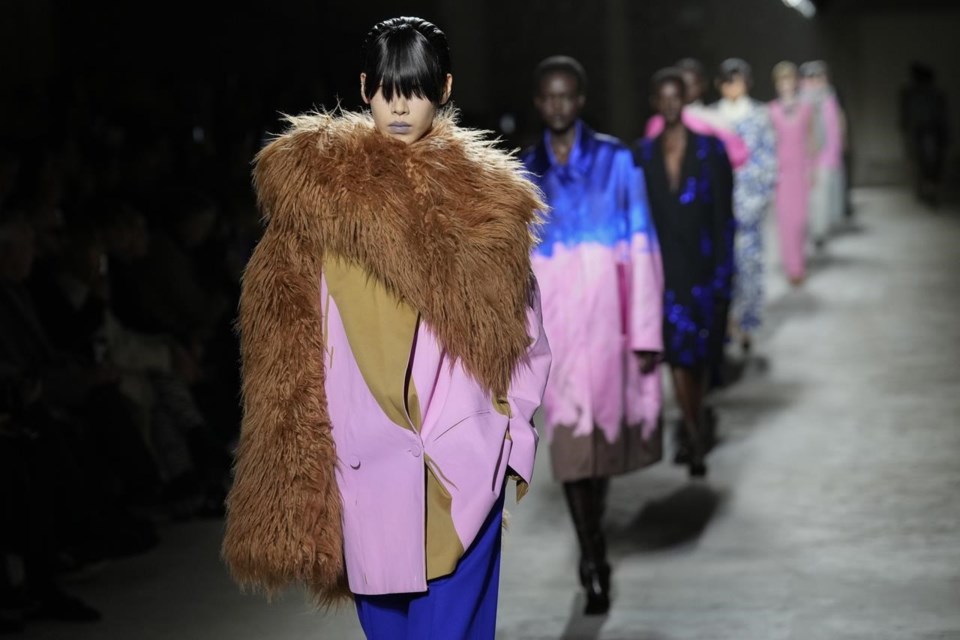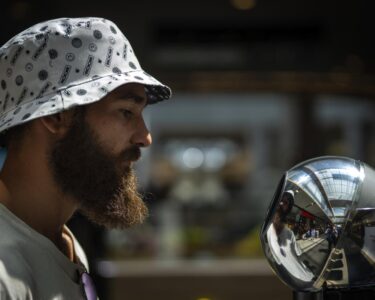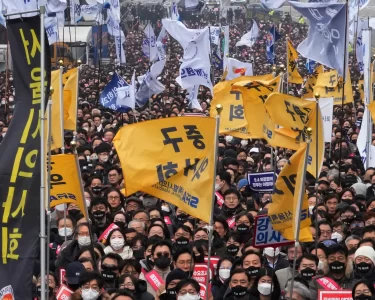PARIS — Paris Fashion Week’s fall shows on Wednesday traversed an encyclopedic range from history to the future, blending tradition with cutting-edge innovation.
Designers delved into archives to reinterpret the past while projecting forward with futuristic silhouettes and materials. From utilitarian details that ground regal aesthetics in the contemporary to surreal interplays of form and texture, the collections celebrated the industry’s ability to innovate while honoring its past.
Even in an increasingly digital age, the enduring tradition of handcrafted, elaborate invitations was also a poignant reminder of the industry’s commitment to personal touch and craftsmanship.
Here are some highlights of fall-winter 2024 ready-to-wear collections:
Belgian designer Dries Van Noten is a storyteller in the fashion world, sewing history, tension, and elegance into each look. His latest womenswear show was no exception, kicking off with a display of grandeur meeting a contemporary edge. The opener, a thick beige coat seeming regal, was immediately grounded in the present with a utilitarian studded collar, reminiscent of a choker, steering clear of vintage territory.
Van Noten, a master of blending the old with the new, further demonstrated this skill with a simple gray skirt that draped in a manner both fashion-forward and evoking the turn of the (last) century. A loose top managed to straddle the worlds of sportswear and the refined elegance of Princess Anne of Britain, showcasing Van Noten’s unique ability to navigate between different eras and styles.
The show was a visual feast of illusions and contrasts. The sleeves were cut to make them almost two-dimensional, an innovative play on perspective that challenges the viewer’s gaze. Sweaters seemed to animate, embracing their wearers in a dance of fabric and form. This interplay of textures and colors created a dynamic energy and poetry that has become a Van Noten hallmark.
In an age where digital communication reigns supreme and environmental consciousness is rising, the fashion industry’s cherished practice of creating elaborate, often handmade invitations continues to thrive. Each season, these unique pieces of art crisscross Paris, hand-delivered to the guests, serving as a creative prelude to the spectacle of the runway shows.
Despite the digital shift, top fashion houses remain dedicated to crafting imaginative invitations that hint at the theme of their upcoming collections. For example, Loewe ’s invitation, a watercolor painting set against a tree-lined landscape within a soft leather frame, showcases the brand’s commitment to combining art with fashion. Meanwhile, Chloe’s invitation, a giant leather keyring adorned with a golden metal banana, introduces a playful element to Chemena Kamali’s anticipated debut. Rick Owens personalizes the experience with a white fabric neckpiece bearing the guest’s name. Yohji Yamamoto’s invitation, an enigmatic black plastic cutout of a human face in profile, adds a layer of mystery.
These invitations, rich in creativity and craftsmanship, underscore the fashion industry’s appreciation for tradition and personal touch in an increasingly virtual world. While they may seem at odds with growing ecological concerns, they also reflect the industry’s ongoing dialogue about balancing innovation with sustainability. As the fashion world evolves, these invitations stand as a testament to the enduring value of artistry and the personal connection in high fashion.
In a saleable display of monochrome, Nicolas di Felice unveiled his latest collection for Courreges on a pared-down, sanitized white runway, drawing fashion insiders into a world where Andre Courreges’ space-age legacy meets the enigmatic allure of underwater scuba wear, all while channeling a dash of ’90s nostalgia.
Fall was a study in cool, low-energy sophistication. Each piece boasted minimalist utilitarian details—flappy tassels, headwear caps reminiscent of scuba gear, and geometric paneling with scooped-out shapes that spoke of intergalactic adventures. One of the models’ arms was often loose, appearing bare, tucking in the front of a garment, as the sleeve it was meant to occupy hung stiffly and empty at the side in a surreal touch. This geometry, a reverential homage to Courreges’ founding vision, was reimagined through di Felice’s contemporary eye.
Noteworthy were fashion-forward elements like pale body panels that cleverly played with the silhouette, erasing the traditional shape of the torso and introducing a fresh narrative on form and space. ’90s influences were palpable, from the layering of skirts over pants to a chub coat that wouldn’t seem out of place in the wardrobe of “Game of Thrones’” Jon Snow.






